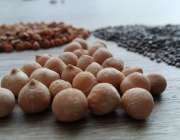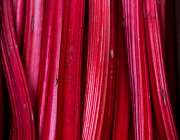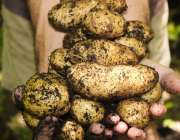- Email: info@yournutrition.site
- Home
- Living well
- Services
-
Recipes
- Recipes overview
- Large nutrition filter
- Breakfast
-
Lunch
- Spiced lentil soup
- Curried butternut squash and peanut butt
- Hearty leek and potato soup
- One pot spanish rice and bean soup
- Roasted veg filled herb egg rolls
- Spanish tortilla
- Vine tomato soup
- Chickpea and chorizo soup
- Pumpkin, sweet potato and ginger soup
- Minestrone soup
- Hot plum and fennel salad
- Chickpea and spinach curry
- Pink scottish salad
- Potato, pea and mint tortilla
- How to make your own kimchi
- Skirlie ball recipe
- Spiced carrot & lentil soup
- Poached eggs with grilled vegetables on
-
Dinner
- Hearty root veg curry
- Tarka dal
- Batch cooked beef stew
- Batch cooked chicken biryani
- Spiced pilau rice
- Pesto risotto with caramelised onions
- Mexican style sweet potato gratin
- Idiyappam
- Pumpkin risotto
- Jamaican black bean stew
- Balsamic roasted beetroot
- Easy peasy pizza
- Carrot and celeriac gratin
- Leek and potato cake
- Kale pesto
- Macaroni cheese
- Joe's healthier chilli
- Chicken jalfrezi
- Snacks
- Desserts
- Special diets
- Learn to cook
- Testimonials
- About
-
News
- News overview
- Nbite
- Nutrition News
- Site News
-
General News
- Coming soon
- Local News
-
Promotions
- Coming soon
-
Competitions
- Coming soon
- Links
- Contact
-
NBite 17th March 2017
- Mar 11, 2017
- Joe Jones
- 583 words, Reading time around 3 minutes
- Nbite
-
fibre food health heart minerals mood nutrition vegetables vitamins diet
Gut bacteria
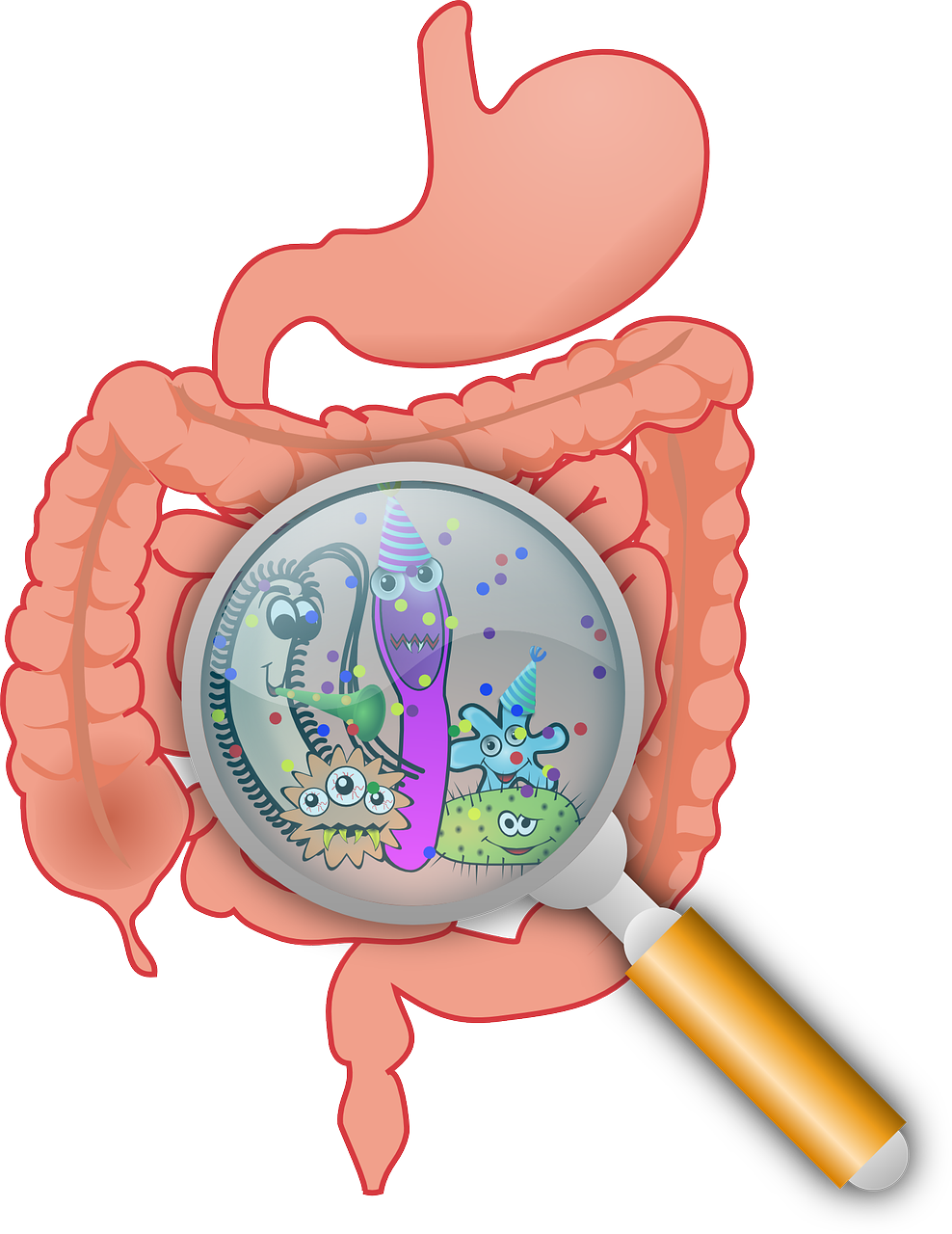
Clip art image of the gut
NBite
Welcome to the second edition of our regular nutrition and food article, NBite!
This articles topic focus is Fibre! I'll be covering what fibre is, why it's so important in our diet and the best sources to increase our intake levels. Continuing our seasonal food segment, this week i'll be showcasing Celeriac, and of course including a link to a lovely recipe that you can try at home.
What exactly is fibre?
Fibre (also called roughage) is found in the cell walls of plants, which means only foods that come from plants are a source of fibre. It has been shown in many studies to have a range of health benefits, such as improving our gut health, helping to prevent the development of heart disease, diabetes and some cancers. Fibre has also been shown to help prevent unhealthy weight gain, mainly from helping us to feel fuller for longer after eating.
Good for our guts!
Many kinds of fibre can be fermented by the different bacteria in our gut, this causes them to produce substances that have been shown to be good for our health. Eating a variety of different fibre sources will also help to increase the numbers of these beneficial gut bacteria.
Fibre types
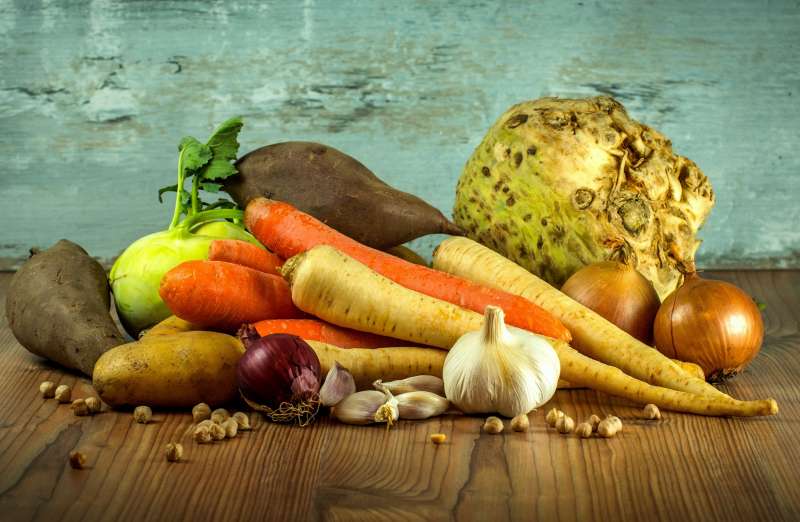
Vegetable selection
There are many different kids of fibre, which mainly come under two main types: Soluble and Insoluble, both of which we need in our diet as they are used in our bodies in different ways.
Soluble fibre
Soluble fibre is able to dissolve in the water found in our gut, as it dissolves it forms a gel which has been shown to soften stools helping waste to move through our gut more easily. Certain soluble fibres such as beta-glucans and pectins also help to reduce cholesterol levels in our blood.
Good sources of soluble fibre include:
- Breakfast cereals high in oats, barley or rye
- Root vegetables such as carrots, celeriac and potatoes (with their skin)
- Whole fruits such as banana and apples
- Beans and pulses (various beans and chick peas)
- Golden linseeds
Insoluble fibre
Insoluble fibre isn't able to dissolve in water, so it passes through our gut mostly without being broken down. It aids other food we eat in passing through our gut more easily, and as it passes intact to our large intestine where it feeds our waiting gut bacteria, helping to keep our digestive and other body systems healthy.
Good sources of insoluble fibre include:
- Wholemeal foods such as bread, pasta and rice
- Cereals
- Bran
- Nuts and seeds (not golden linseeds)
How much fibre do we need?
The latest guidelines for the general population, recommend that adults should be eating around 30g of fibre each day, currently, we are only eating on average 18g per day.
For children the recommended average amounts per day are:
- 2-5 years 15g
- 5-11 years 20g
- 11-16 years 25g
Seasonal food of the week
This week my seasonal food of focus is celeriac. An often overlooked vegetable, whether for the way it looks of a lack of ideas of what to do with it.
Celeriac is actually the edible root of a type of celery, so it has a similar smell and taste. Its a source of vitamins K, C and B6 and is a very versatile vegetable, used in much the same way as turnip or potato. The simplest way is to peel it then cut into chunks to be steamed or roasted and made into wedges or a mash.
It can also be paired with other root veg, such as potatoes or carrots as part of a gratin recipe such as the one in our recipe section below.



